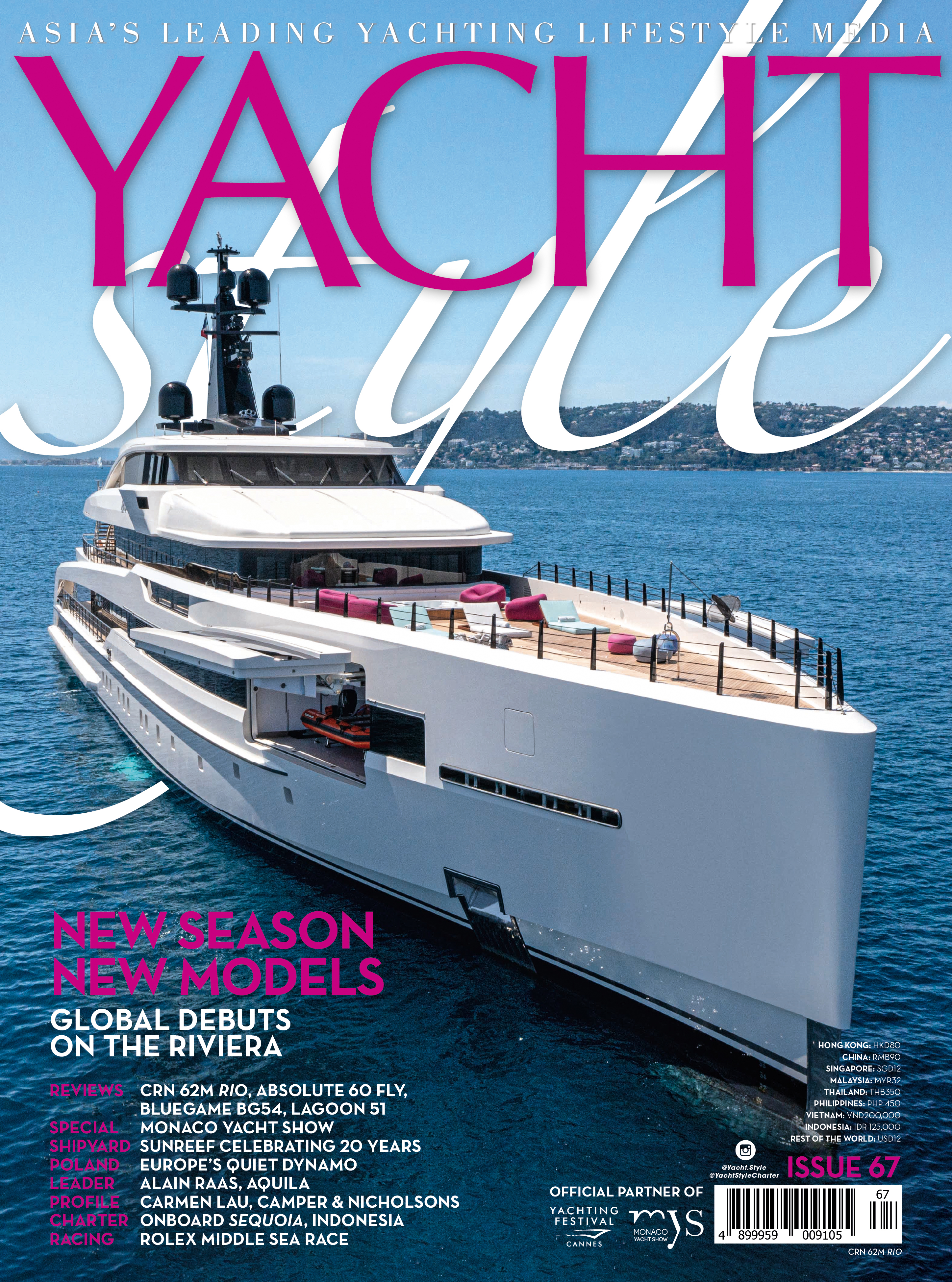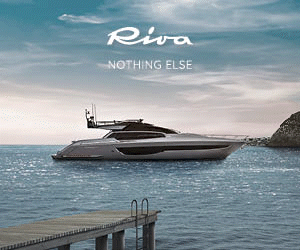First Silent 60 showcases Silent-Yachts’ optional kite sail system
SHARE
- November 29, 2021
- 2:12 pm
Based in Mallorca, the first Silent 60 is the first of the brand’s solar-electric catamarans to be fitted with the optional kite sail system, which has been ordered on many more hulls.
Silent-Yachts has showcased its first Silent 60, which carries 42 solar panels for 17kWp of solar energy and is further boosted by the brand’s optional kite sail system.
Succeeding the 64 and 55 models, the Silent 60 is the first of the builder’s new generation of yachts that also include the 62 3-Deck, 80, 80 3-Deck and 100, with each 3-Deck offering a much larger flybridge that can be fully open or partially enclosed.
Silent-Yachts produce ocean-going yachts that are fully powered by solar energy and can cruise with zero emissions for up to 100nm a day. The Silent 60 is designed by Pattaya-based Dr Albert Nazarov and units are being built by nearby PMG Shipyard in Rayong (read more) and Silent’s own shipyard in Italy.
Built in Thailand and now based in Mallorca, hull one has twin 250kW e-motors, a 100kW generator and 210kWh battery storage. However, the Silent 60 has a wide range of power options including two electric motors up to 340kW each and battery storage up to 286kWh.
KITE SAIL OPTION
A 9sqm or 13sqm kite sail can be fitted on any Silent-Yachts model and is housed in a storage locker under the foredeck along with an electric winch and a short, collapsible mast.
On the first unit, the mast is connected by four shrouds to pad eyes on deck that distribute the forces through the hull structure. However, on subsequent deliveries – eight units with the kite wing option have been ordered to date – the mast will be mounted on a baseplate inside the locker to leave the foredeck clutter-free.
After inflating the kite, it’s released overboard to drift away on the surface of the water. Pulling on the lines launches it into the air and once it reaches the optimal flight height, it begins to trace a figure ‘8’ in the sky and generates power to pull the yacht.
To stop kiting, the automated app controls move the kite to a position above the boat where it has the least pull on the line. From here it can be winched down electrically and collapsed over the foredeck ready for stowage.
PULL NOT PUSH
Michael Köhler, founder and CEO of Silent-Yachts (read more), said: “The main advantages of a kite over a conventional sail system are that it does not throw shade on the solar panels, does not need a tall mast and generates up to 10 times more power per square metre than a traditional sail. At 5 Beaufort, we can drive with the kite indefinitely at 6-7 knots, which is faster than a comparable sailing catamaran in such wind conditions when crossing the ocean, for example.
“In addition to that, it saves about 1.5 tons of weight compared to a conventional rig and costs much less. It makes even more sense for the Silent boats that run on renewable solar energy because the power generated by a kite easily exceeds the energy consumption of the system, so you can charge the batteries while cruising under kite power. And besides that, it’s great fun!”
The builder says a big advantage of a kite compared to a conventional sail is that the kite flies in much higher altitudes and therefore gets more steady, stronger winds, yet can be used at low wind speeds of less than 10 knots.
POWER STEERING
As the kite pulls the boat rather than pushes it like a conventional sail, it requires good steering capability, especially as a motor yacht typically has a small rudder and big propellers, contrary to a sailing boat. However, this problem can be solved by running the solar-powered motors at 100rpm, while a conventionally powered boat would need to run diesel motors when using a kite.
Silent-Yachts Captain Mike Wandler said he had tested the performance of a 9sqm kite on different headings and at wind angles of up to 40 degrees. “Unlike a conventional sailing boat, the best results were directly downwind. Under kite power with no engines on or propellers turning, the boat speed was between 4-5 knots,” Wandler said.
“We then switched on the electric motors, drawing just 1kW each, to reduce drag from the propellers and improve the flow of water over the rudders for better steering. This led to boat speeds from 6-7 knots over the same headings, a significant improvement on our original predictions.”
The first Silent 60 has four guest cabins on the lower deck including a spacious full-beam master suite forward, although other layout solutions are available. The saloon has up to 2.3m of headroom, while other social areas include the aft cockpit, flybridge and the foredeck.
A sub-1m draft allows access to shallow bays, ideal for cruising grounds in the Caribbean and Southeast Asia. The lifting hydraulic platform can carry a 4m tender, while the swim platforms on each side can be extended on an owner’s request to be able to carry a pair of electric jet-skis.
Featuring a new, high-performance hull form with a longer waterline and reverse bow, the Silent 60 has a cruising speed of 6-8 knots, but can reach 20 knots depending on the power options.
www.silent-yachts.com
www.farfallamarinegroup.com
Silent-Yachts sells first flagship 100 Explorer
Silent-Yachts has sold the first unit of its new flagship – the Silent 100 Explorer solar-electric catamaran designed by Marco Casali.































